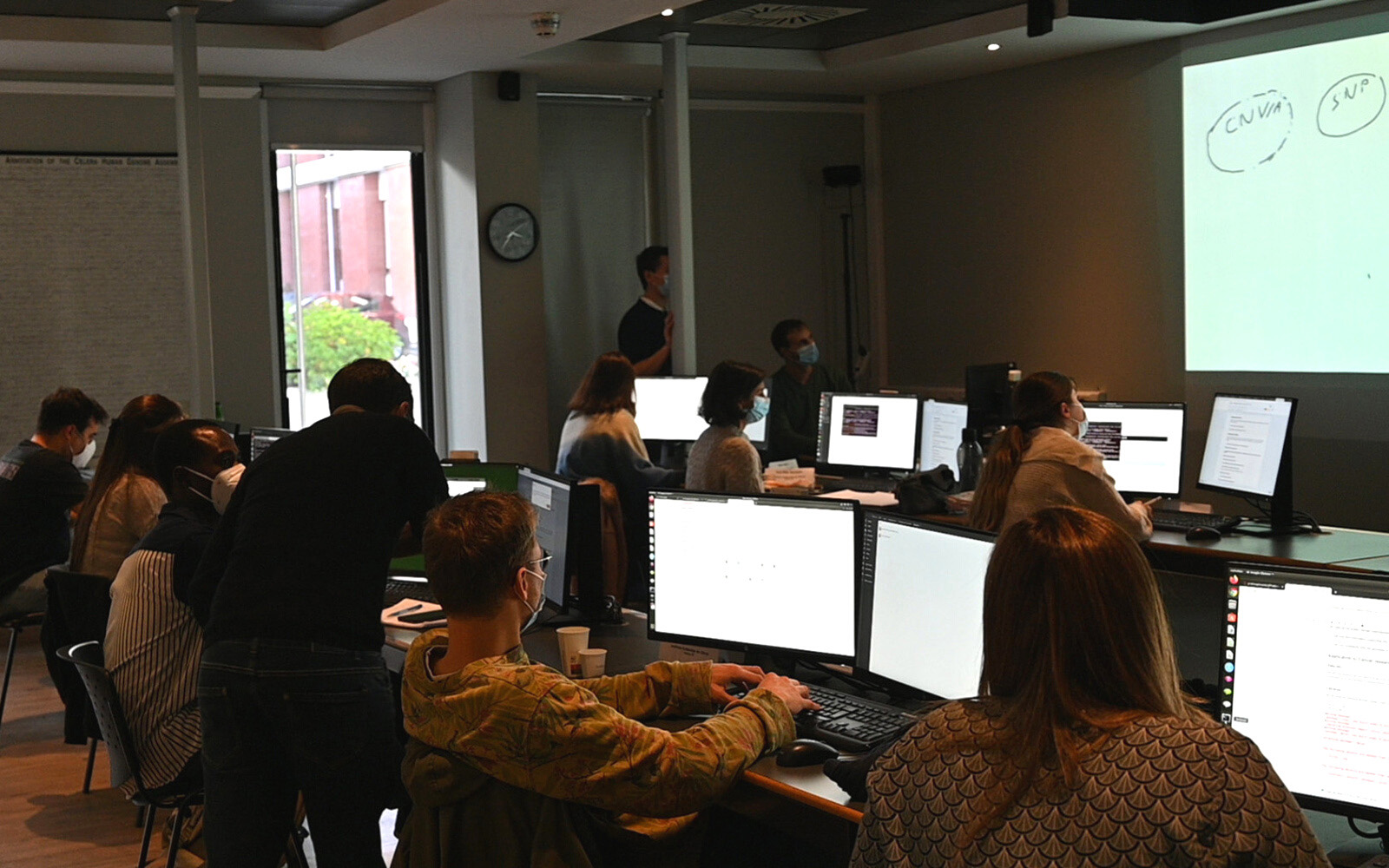3DAROC22 - 3C-data Analysis and 3D reconstruction of chromatin folding
Event Slider
Date
- / Cancelled / Sold out
Location
Instituto Gulbenkian de CiênciaRua da Quinta Grande, 6
2780-156 Oeiras
3C-based methods, such as Hi-C, produce a huge amount of raw data as pairs of DNA reads that are in close spatial proximity in the cell nucleus. Overall, those interaction matrices have been used to study how the genome folds within the nucleus, which is one of the most fascinating problems in modern biology. The rigorous analysis of those paired-reads using computational tools has been essential to fully exploit the experimental technique, and to study how the genome is folded in space. Currently, there is a clear expansion on the wealth of data on genome structure with the availability of many datasets of Hi-C experiments down to 1Kb resolution.
This training course promoted by the GTPB (Gulbenkian Training Programme in Bioinformatics), is aimed at experimental researchers and bioinformaticians at the graduate and post-graduate levels. Participants will learn to use TADbit, a software designed and developed to manage all dimensionalities of the Hi-C data.
Instructors:
Marc Marti-Renom and David Castillo, Centro Nacional de Análisis Genómico (CNAG) and Center for Genomic Regulation (CRG), Barcelona, ES
Marco di Stefano, Institute of Human Genetics (IGH), Centre National de la Recherche Scientifique (CNRS), University of Montpellier, Montpellier, FR
Application deadline: 17 November 2022
Applications
The Calouste Gulbenkian Foundation reserves the right to collect and keep records of images, sounds and voice for the diffusion and preservation of the memory of its cultural and artistic activity. For further information, please contact us through the Information Request form.

